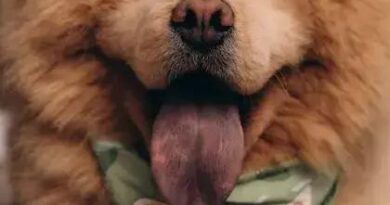What is Oral diseases
What is Oral Diseases in Dogs?
Oral diseases in dogs encompass a range of conditions that affect the mouth, teeth, and gums. These diseases can lead to significant health issues if left untreated, impacting not only the oral cavity but also the overall well-being of the dog. Common oral diseases include periodontal disease, gingivitis, and tooth decay, all of which can cause pain and discomfort for your furry friend.
Understanding Periodontal Disease
Periodontal disease is one of the most prevalent oral diseases in dogs, characterized by inflammation and infection of the tissues surrounding the teeth. This condition typically begins with the accumulation of plaque, which hardens into tartar if not removed through regular dental care. As the disease progresses, it can lead to tooth loss and systemic health issues, as bacteria from the mouth can enter the bloodstream and affect vital organs.
Signs of Oral Diseases
Recognizing the signs of oral diseases in dogs is crucial for early intervention. Common symptoms include bad breath, difficulty eating, swollen gums, and excessive drooling. Additionally, dogs may exhibit behavioral changes, such as reluctance to play or a decrease in appetite. Regular dental check-ups can help identify these issues before they escalate into more serious conditions.
Causes of Oral Diseases
The primary cause of oral diseases in dogs is poor dental hygiene. Without regular brushing and professional cleanings, plaque and tartar build-up can lead to infections and inflammation. Other contributing factors include genetics, diet, and age. Certain breeds are more predisposed to dental issues, making it essential for pet owners to be vigilant about their dog’s oral health.
Preventing Oral Diseases
Preventing oral diseases in dogs involves a combination of good dental hygiene practices and regular veterinary care. Brushing your dog’s teeth several times a week, providing dental chews, and scheduling professional cleanings can significantly reduce the risk of developing oral diseases. Additionally, a balanced diet that supports dental health can contribute to overall oral hygiene.
Treatment Options for Oral Diseases
Treatment for oral diseases in dogs varies depending on the severity of the condition. Mild cases may be managed with improved dental hygiene and regular check-ups, while more severe cases may require professional cleaning, tooth extractions, or medication to control infection and pain. It is essential to consult with a veterinarian to determine the best course of action for your dog’s specific needs.
The Role of Diet in Oral Health
A dog’s diet plays a significant role in maintaining oral health. Certain dog foods are formulated to reduce plaque and tartar buildup, while others may contain ingredients that promote healthy gums. Additionally, incorporating dental treats and chews into your dog’s diet can help mechanically clean their teeth and freshen their breath, contributing to overall oral hygiene.
Importance of Regular Vet Visits
Regular veterinary visits are crucial for monitoring your dog’s oral health. During these check-ups, veterinarians can assess the condition of your dog’s teeth and gums, provide professional cleanings, and recommend any necessary treatments. Early detection of oral diseases can prevent more severe health issues down the line, ensuring your dog remains happy and healthy.
Home Care for Your Dog’s Oral Health
In addition to professional care, pet owners should implement a home care routine to maintain their dog’s oral health. This includes regular tooth brushing, providing dental toys, and monitoring for any signs of oral disease. Establishing a consistent dental care routine can help prevent the onset of oral diseases and keep your dog’s mouth healthy.




